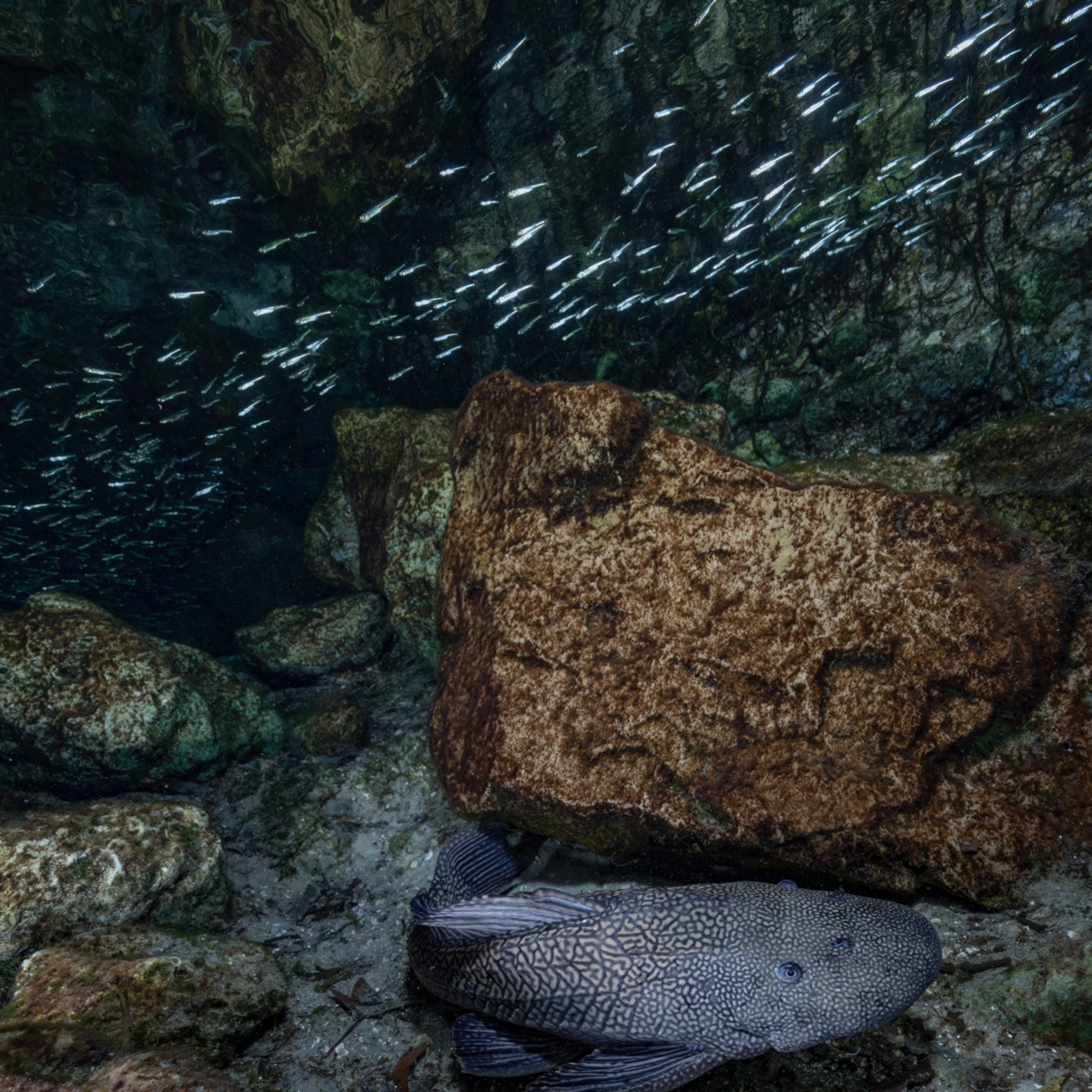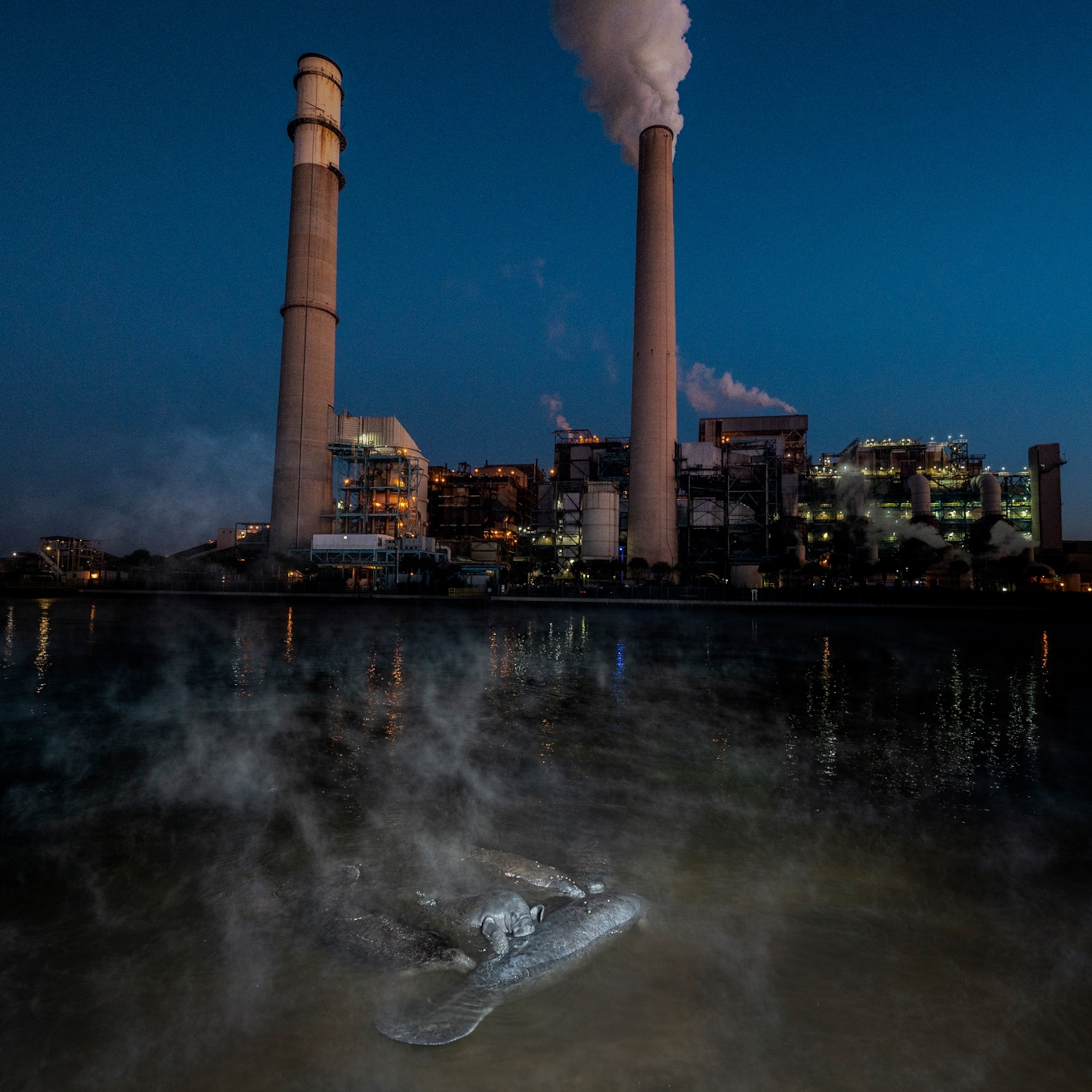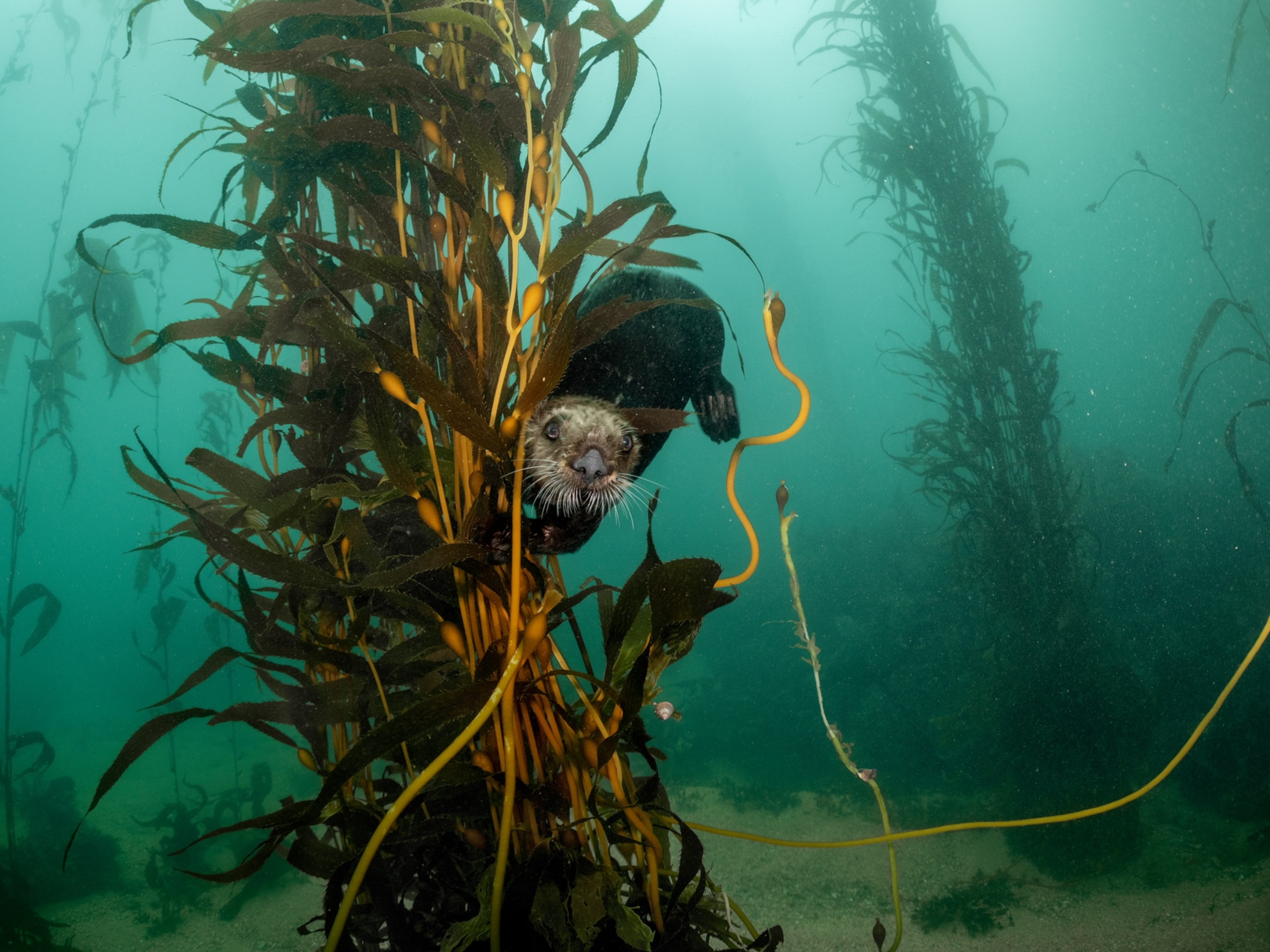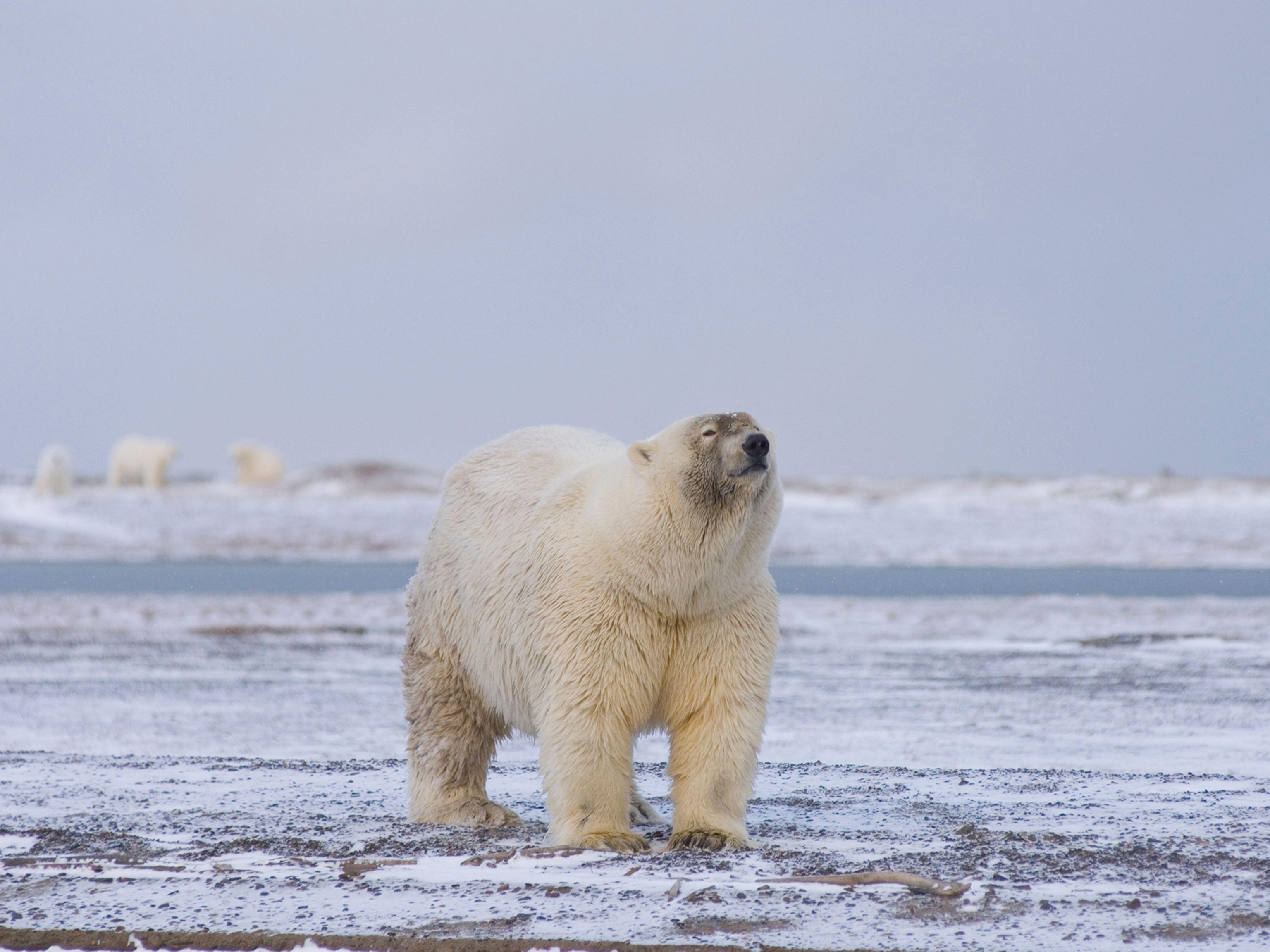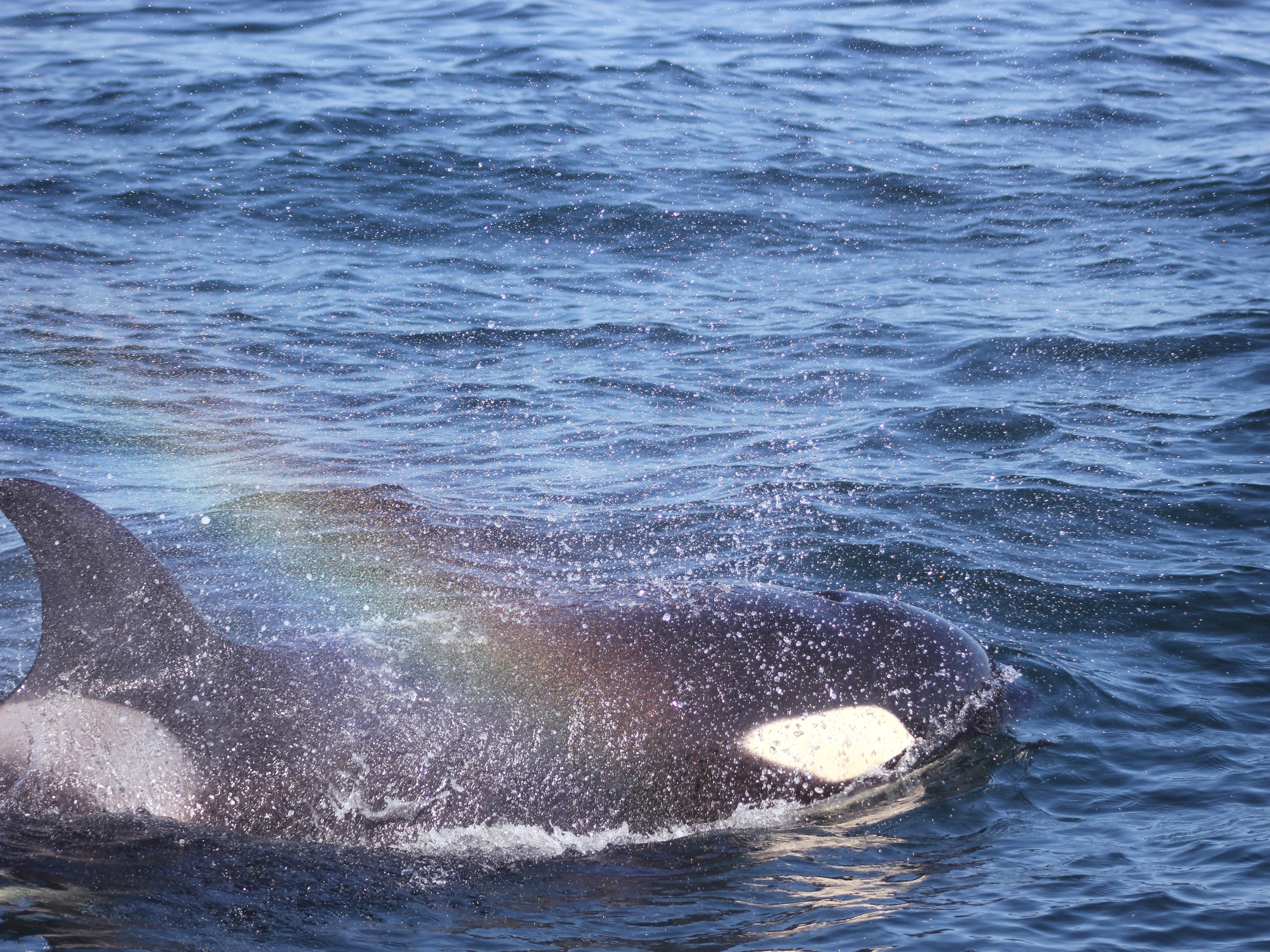There have never been more manatees in Florida than there are now
Manatees are a bit like the Sunshine State's transplants: they recently moved there, attracted by the warm weather and human development. But the same changes that brought them there could lead to their demise.

A new study in PLOS ONE suggests Florida manatees might be more abundant now than ever before in North American human history. Some of the human-driven changes that now threaten them may have actually been responsible for their population growth over the past two centuries.
The Florida manatee (Trichechus manatus latirostis) is a subspecies of the West Indian manatee and primarily found in Florida. The state’s current manatee population is estimated to be between 8,350 and 11,730.
Before the 19th century, manatees swimming through Florida were more akin to tourists, with permanent homes in the Caribbean, according to the new research. Drastic changes to the landscape by European colonizers, and human-driven changes to the climate, coincided with the arrival of more manatees in Florida waters.
Now, experts worry some of the same changes that attracted manatees to Florida are making it harder for them survive.
Historical evidence suggests manatees were rare
Archaeologists at the University of South Florida and George Washington University in Washington, D.C. analyzed 67 archaeological reports, detailing about two million animal bones dating back 14,000 years, and almost none of them were manatee bones. The few manatee bones that were found were used for tools or ornaments.
The researchers hypothesized manatees were rare or not present in pre-colonial Florida, and that tools and ornaments made from manatee bones had arrived from Native Americans trading with people in the Caribbean, where there is archaeological evidence of people hunting manatees.
It is possible manatees lived in Florida waters at that time but were not hunted, hence the lack of bones at archaeological sites, but the study authors find this explanation unlikely.
Manatees were not described in the accounts of explorers landing in Tampa Bay between 1528 and 1595, who would have been searching for food sources. Some older explorer accounts included unclear references, mentions of “sea wolves” for example that are now believed to have referred to seals.
The first reliable written narratives of manatees in Florida date to the late 1700s, when the area was a British colony, but even then, sightings were not commonly documented.
But by the 1920s and 1930s, routine manatee sightings were reported in the print media.
“When people spotted them in the 1800s, it was front page news,” says Thomas Pluckhahn, archaeologist at the University of South Florida and author of the study. By the mid-1950s reports called manatees “more plentiful” in Tampa Bay, and named them “permanent residents” of Crystal River, both on Florida’s Gulf Coast.
This led the study authors to conclude manatees were present only in low numbers, as occasional visitors from the Caribbean, before settling permanently in Florida in the late 1800s and 1900s.
“What we can say for sure is that manatees are poorly represented in the archaeological and historical records up to the 1800s,” says Pluckhahn. “We think the most likely hypothesis is that they were not present in very substantial numbers; we think that Florida was on the very northern periphery of their range, and they only occasionally extended this far north when temperatures allowed.”
Florida gets more comfortable for manatees
Florida waters were likely too cold for manatees before the 1800s, when a period of cooling called the Little Ice Age, which had started in the 1200s, was just ending. As the Little Ice Age’s effects faded in the 1800s, manatees may have been able to expand their range north from the Caribbean to Florida.
Warmer waters due to human influence—through climate change, or through industrial sources like power plants warming waters—made the region even more comfortable for manatees.
Newspapers from the late 1800s and early 1900s describe manatee sightings in warm water areas like yacht basins and canal harbors, according to the new study. These human-created warm-water refuges could have facilitated manatees’ northern range expansion.
These growing manatee populations were protected by changing perceptions and legal bans that also began to take place around this time.
In early 19th century newspaper records, manatees were often called fish, referred to as monsters, and some people worried they could come out of the water and walk on land.
“Eventually, people started to understand them more as mammals that took care of their young, that were vegetarians—so not a threat to people,” says Pluckhahn.
New challenges for Florida manatees
“Ultimately, the distribution of manatees was likely much different in earlier times,” says Aarin Allen, ecologist at Florida International University who was not involved in the new study, in an email. “As the authors correctly note, the establishment of power plants along the Florida coastline in the past 75 years has enabled manatees to expand their range further north.”
Although manatees thrive in these warmer waters, Florida manatees still face threats. Pollution has caused harmful algal blooms and declines in seagrass, Florida manatees’ key food source.
“A concerted effort is required to protect and restore manatee habitats, particularly seagrass meadows,” says Allen, who attributes seagrass depletion to pollution.
In 2017 Florida manatees were reclassified from endangered to threatened under the Endangered Species Act, almost 50 years after their original listing as endangered. Yet an increase in manatee deaths on Florida’s Atlantic Coast since 2021 led to the declaration of an “unusual mortality event” for the region, which remains ongoing, and can primarily be attributed to malnutrition from the loss of seagrass according to Allen.
Warm-water refuges for manatees around power plants also present a conundrum.
Some conservationists call for retaining these industrial sources of warm-water refuges for manatees, until they can be weaned off and alternatives found.
“Providing a passive thermal refuge is critical as no one wants to see mass mortality as a result of the power plants closing,” Ray Ball, biologist at Eckerd College who was not involved in the new study, said in an email. Ball’s research has proposed a floating greenhouse as an alternative warm refuge for manatees if power plants close.
Thinking creatively about weaning manatees off of power plant heat refuges, and managing pollution to address seagrass declines, are important ways to help manatees, says Pluckhahn.
“I don’t want this research to be used to justify delisting manatees [as endangered],” says Pluckhahn. “I think what this research shows is humans are largely responsible for manatees’ expansion and numbers and range, and that makes us responsible for the manatees’ wellbeing.”

